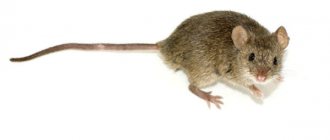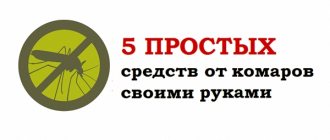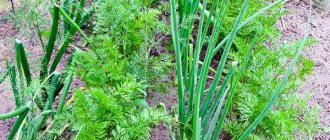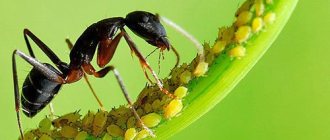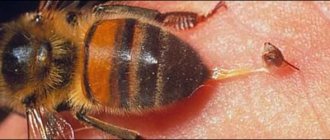To prepare the solution, it must be diluted with water (per 10 liters 1 - 1.5 tablespoons of powder). In addition to having a good effect on insects, it helps to further disinfect the soil and is effective against fungal diseases. But how calcium ammonium nitrate is used is described in the article at the link. An aphid attack on tomatoes is a real disaster for any gardener. The rapid rate of spread and damage to plants poses a huge threat to future crops, so it is necessary to accurately develop a strategy to combat this pest. How to destroy black aphids on tomatoes using folk remedies, as well as suitable preparations for chemical treatment are described in the information in our article.
What types of aphids eat tomatoes?
Aphids differ in external characteristics and in the structure of the body, so it is recommended to know which particular variety appeared on the plants and what features it has.
Black
Black garden aphids are divided into the following types:
Externally, the insects are about 0.5 cm in length, with a flat oval-shaped body and many legs.
White
The white aphid has a drop-shaped appearance and is also white in color, which is why it is sometimes compared to drops of morning dew. If you look closely, you can see the typical structure for this species: proboscis, antennae, many legs. The body is translucent, can be with or without wings. Also, this type is called root.
Peach
The peculiarity of this species is its small size compared to others, up to 2.5 mm in length. The body is oval, there is a trunk and antennae. The color is rich, peach, but a little transparent, sometimes it can be pinkish, the eye color is brown. Females can be either winged or wingless.
Bakhchevaya
It has several shades: from yellow to transparent green. It is also called cotton. These are the smallest insects of their species, reaching a size of up to 1.8 mm. They act as carriers of about 50 viruses.
Signs of aphids
Aphids are very small insects. It is not always possible to notice a single individual.
Therefore, there are a number of signs of attack by these insects:
- a large number of insects in the lower part of the plant;
- curling of the leaf and flower (due to the lack of a sufficient amount of juice that the aphid drank);
- sticky mucus, which is also called honeydew, containing sugar (therefore, ants, because of their love for sweets, “protect” aphids);
- cessation of tomato growth and rotting.
It is necessary to pay attention to the development of the tomato: if it has yellowed leaves and is growing slowly, this may be a sign of aphid damage.
How to process tomatoes?
To quickly and permanently get rid of pests, you need to know how to properly deal with them. The following methods are distinguished:
- chemical;
- physical;
- using folk remedies.
When the first signs of damage appear, measures are taken immediately, since insects spread quickly, especially during fruiting of the vegetable, since during this period the tomato bush is saturated with a large amount of juice.
Chemicals
This is a quick and easy way to save a plant, since the aphid habitat is treated just once with the product, and it disappears.
- "Karbofos" . It is necessary to spray before flowering, since harmful substances are released within two weeks and then disintegrate. Works only on adults, not eggs. Dilute 30 grams per 15 liters of water, spray on areas where insects accumulate.
- Bleaching powder . You need to dilute 2 tablespoons with 15 liters of water, then treat the leaves. A universal remedy for both the plant itself and the soil.
- "Trichopolus" . Use according to the scheme: 20 tablets per 10 liters of water. This solution is safe for both tomatoes and human health. The drug is used to treat diseases, but can also be used as a chemical against insects.
Pay attention to the instructions for the drug you are using. This will not only help the plant get rid of pests, but its fruits will also be safe for humans to eat.
Traditional methods
If chemicals are not suitable, traditional methods are used, which are also effective. But you need to know how to treat tomatoes so that the plant does not rot and develops well.
The following methods are used:
- Using soda . To prepare the solution, mix three tablespoons of baking soda in a bucket of water, then treat the affected areas. It must be taken into account that soda in large quantities affects the composition of the soil, and as a result the plant develops more slowly.
- Using ammonia . To do this, 2 tablespoons of ammonia are mixed with 10 liters of water, after which for 10 days with a break of 2-3 days you need to spray the plant along the entire perimeter and the plants adjacent to it for prevention.
Wood ash is also used, but it is effective if the aphids are close to the ground.
How to fight?
What to do if the plant is attacked by insects: fight with chemical and biological preparations. They help get rid of colonies in a short time. The active substances penetrate through the oral apparatus into the intestines and torso. But not every person will decide to treat plants with pesticides, because these substances will remain in the plants.
Folk remedies are safe but ineffective methods. They can only repel insects, not destroy them. The result is that the aphids move to neighboring vegetable crops and continue to reproduce safely. But first things first.
Useful recommendations and prevention
To prevent the appearance of insects, follow the recommendations:
- When aphids appear, immediately take measures to get rid of them;
- treat the area and seeds before planting;
- do not fertilize tomatoes with nitrogen in large quantities, as it attracts pests;
- in the fall, burn all plant remains in order to destroy it in case of disease.
By adhering to these rules, it is easy to avoid the appearance of insects.
Video: Folk remedy for fighting aphids on tomatoes
Thus, there are many types of aphids that spread quickly on tomatoes, so it is recommended to take action when you notice the first signs of infestation. To do this, they use chemical, physical and folk methods, which we described above. By choosing the right one, you will protect the plants on the site from such troubles.
Tips and tricks
- Promptly remove fallen leaves, tops and weeds into the compost pit. This will make the area unattractive for overwintering pests.
- By winter, the compost pit is covered with a layer of earth to prevent insects from getting out.
- Aphids do not tolerate low temperatures, so after a warm winter their population and activity especially increase.
- If pests have attacked cucumbers, then next season you should not plant tomatoes in the same place.
Aphids can cause serious damage to the tomato crop. Insects multiply rapidly, so measures should be taken immediately after detecting pests. The best option would be a combination of several control methods.
Types of aphids that live on tomatoes
Many people know what aphids look like on garden and vegetable crops. These are small insects 2-3 mm in size that parasitize whole colonies on the underside of leaves and on young shoots of plants. They settle both on greenhouse tomatoes and in open ground, attacking both seedlings and adult bushes.
In the garden you can find different types of these pests: white and black, green, melon and red aphids. There are also insects with and without wings.
The most common types of aphids found on tomatoes are:
- White or root - hatches from eggs overwintering in the ground and settles near the soil surface, which makes it difficult to detect. It moves quickly and gradually chews through the base of plant stems. White aphids that have settled on tomato seedlings can completely block the access to moisture, inhibiting the development of young bushes.
- Potato aphids are red or green insects up to 4 mm in size that attack greenhouse and ground tomatoes.
- Melon aphids are very small pests measuring 1-2 mm in various shades of green. Awakening in the spring and early summer in the greenhouse, the larvae begin to actively develop, gradually become adults, and then fly out into the open air in July-August; winged females are black and green in color.
- Peach (or greenhouse) - overwinters at the bases of the buds of peach trees; during spring reproduction, it often moves to tomatoes and other garden crops.
Aphids on tomatoes
A winged aphid is a fertilized female that selects a garden or garden plant, settles on it and, laying eggs, creates a colony of parasites.
Aphids are very often found on tomatoes in a greenhouse, where there are the most favorable conditions of humidity and heat for its development and reproduction. Therefore, any owner who detects even a small amount of such a pest on his seedlings or adult plants needs to choose as quickly as possible how to treat tomatoes against aphids before they cause much damage.
What kind of aphids are there on tomatoes?
Almost everyone knows what aphids look like on various crops. These are small insects no more than 3-4 mm in length. They settle on the underside of leaves and young shoots, sucking their juices. At the same time, aphids on tomatoes in the greenhouse and beds produce sticky secretions - sweet honeydew, which ants love - and create “aphid farms”, spreading the larvae to healthy, uninfected plants. Depleted leaves and shoots dry out.
The second danger from aphids is that a sooty fungus begins to develop on these secretions on parts of the bush and tomato fruits and very soon the shoots become covered with black mold, which destroys the plants and the entire crop.
Only 6 varieties can appear on tomatoes:
- black
- potato;
- melon;
- white;
- red;
- greenhouse (most often it occurs in a greenhouse and greenhouse).
Black aphids, also called flower aphids, are a very dangerous pest of tomatoes. The size of adult insects is up to 4-5 mm, the color can be black, dark brown and blue, the body is shiny. The danger of the black variety is that the insect crawls along the bottom of the leaves and makes hundreds of punctures per day with its proboscis. Pathogenic microorganisms get there, and the tomato bush gets sick. After the appearance of black aphids, tomatoes die within 10-14 days.
A good remedy for aphids when they first appear on tomatoes is to wash them off with a strong stream of water from a hose, and then treat them with a soap solution. To do this, add 1 tbsp to 0.5 liters of water. liquid or diluted laundry soap or dishwashing detergent, then 0.5 cups of unrefined sunflower oil and spray the bushes with a spray bottle, trying to get on the lower part of the leaves.
Potato aphid
It is also called the large or common aphid - the largest, 3-5 mm in size, the color is bright green or pale green, in winged females the body has brown parts. There is a rare species - the red nightshade aphid.
It is spread by ants and the migration of females laying eggs. It overwinters on plant debris, most often affects greenhouse tomatoes, but can also live on cucumbers and other crops. It can produce up to 15 generations per season. Preventive treatment of tomatoes against aphids in closed ground and on the site at the beginning of the infestation involves the use of entomophages: lacewing and two-spot ladybird.
Root or white aphid
Another common type of aphid on tomatoes is the white aphid; the methods for combating it differ, since the insects spend most of their lives underground. The female lays eggs in the soil for the winter, where small insects hatch, which stick to the roots, gradually approaching the base of the bushes, destroying it.
At the same time, the aphids themselves are not visible. With severe damage, the root pest can completely destroy all tomato seedlings and bushes in the greenhouse. The color of the insects is initially white, becoming pink or brown as they mature, and the body is translucent. In greenhouses it can produce up to 50 generations, in open ground - 20-25 over the summer. The best way to fight: prevention of occurrence, which includes the following measures:
- removal of weeds during the growing season;
- mulching plantings;
- disposal of all plant residues, including removal of the root system;
- sowing green manure;
- autumn digging of soil;
- alternation of crops in the beds and in the greenhouse;
- inspection of the roots of seedlings for the presence of a pest.
If insects are noticed on the roots, it is best to use biological preparations for aphids in tomatoes: Gaupsin, Akarin, Bona-forte, Bovarin, Fufanon. If this does not help, the infected area must be treated with Aktara (or Regent, Mospilan) plants (including weeds), watering the soil at the root. Then thoroughly clear the beds of plants, treat the soil using ammonia (ammonia solution: 2 tbsp + 2 tbsp soap per bucket of water).
To prevent ammonia from getting into the eyes and respiratory tract, personal protection is required. Then the area must be sown with green manures with phytoncidal action - radish, mustard, rapeseed, and dug them into the soil for the winter. As a rule, this allows the area to be completely cleared of the parasite by spring.
melon aphid
This malicious pest of tomatoes is very small - 1-2 mm, color - from almost white to dark green. Winged females are green in color with black spots. The pest eggs overwinter in the soil, in hotbeds and greenhouses, in the spring they infect young plants, and in the second half of summer they fly out and infect outdoor beds.
An effective remedy for melon aphids is digging up the soil and freezing the greenhouse before starting the new season. In home greenhouses and greenhouses, the best methods for treating tomato bushes are the use of decoctions of garlic, celandine, Dalmatian chamomile, wormwood and other plants with a pungent odor, as well as biological preparations Actofit and Fitoverm.
On an industrial scale, the only effective way to combat the pest will be the use of chemicals - Akarina, Iskra, Biotlina.
Greenhouse aphid
Its second name is peach. It mainly affects peaches, apricots and sugar beets. But it often spreads to seedlings and weakened tomato bushes immediately after planting. In greenhouses it can completely destroy plants in 2-3 weeks.
Signs of the appearance of this pest are the presence of greenish insects on the bottom of the leaves, on the stalks and in the buds themselves. The fight against it consists of washing off the insects with a strong stream of water - insects that fall on the soil will no longer be able to climb onto the bush. An effective way to get rid of a small amount of pest is to introduce predator insects into the greenhouse (they can be bought in specialized stores): lacewings, ladybugs, sand wasps.
Methods for controlling aphids
Physical methods of controlling aphids
Physical methods of struggle:
- You can remove aphids manually by pinching and squashing them between the affected leaves; it is also recommended to use a toothpick.
- It is better to remove green parts that are heavily damaged and deformed, especially the lower shoots and stems.
- The easiest way is to wash off the parasites with a stream of water from a hose or sprayer; it is best to use it daily until the insects are completely gone.
- Predatory insects can significantly reduce the number of aphids on tomatoes: ladybugs, sand wasps and lacewings, as well as birds.
Application of traditional methods
Anti-aphid remedies
If tomatoes have been attacked by aphids, then various folk remedies that can completely destroy the parasites are excellent in the initial stage of infection. All of the following components are available in every household and can be easily prepared at home:
- Composition of 400 g of vegetable oil and 2 tbsp. Spray the tomatoes with 1 liter of tar or laundry soap per 1 liter of water, preferably several times until the insects disappear completely.
- The use of herbal decoctions and tinctures: celandine, wormwood, yarrow and others, which have a bitter taste and a pungent odor. Usually add 1 liter of prepared infusion and 40 g of soap to the bucket for better adhesion.
- An ash-soap solution is prepared from 1 tbsp. ash, 20 g of laundry soap per 10 l.
- Using an infusion of shag or crushed tobacco will help destroy aphids, for which 500 g of powder is poured into 1 liter of boiling water and kept on low heat for 30 minutes, filtered. Before treatment, the solution must be diluted in 10 liters of liquid.
- One of the proven methods is baking soda for aphids in the amount of 75 g of soda per bucket; the mixture can be used to treat both garden crops and fruit trees;
- Ammonia also helps in the fight against aphids, which has an irritating effect not only on their respiratory system with its pungent odor, but also causes a burn to the digestive organs, leading to paralysis and death of insects. To prepare the solution, add 2 tbsp to the bucket. l ammonia and 1 tbsp. l soap or detergent.
Vinegar, milk with iodine, and garlic are often used. Treatment of crops with Coca-Cola shows quite impressive results. Unlike chemicals that can penetrate the fruits and poison them, all traditional solutions and methods help to effectively destroy and fight aphids during flowering and immediately before harvesting.
It is necessary to take into account that it is better to carry out the treatment in dry weather in the evening and take into account that the subsequent rain washes away the used product from the leaves and stems, so you will have to spray the tomatoes several times.
How to deal with aphids on tomatoes: the best methods
The use of certain methods in the fight against aphids directly depends on how far they have progressed in destroying tomatoes, as well as on the stage of plant growth. Having assessed the existing signs of damage to tomatoes, prepare a plan for how to treat the tomatoes and how to get rid of the persistent pest.
Chemical activities
Chemical protection methods are used only before the flowering stage of plants and in the event that the reproduction of insects has become total.
Important to remember! Treatment with chemicals is harmful to tomatoes and humans; be careful when using them.
Chemical agents affect insects in different ways: through simple contact of aphids with the chemical, intestinal penetration, and respiratory organs. There are also drugs that, when absorbed by the root system, penetrate the plant’s body and make it poisonous to pests. There are many different chemicals sold on the market in the form of powder, tablets, and solutions. You need to choose the one that is relevant to your problem.
The most popular chemicals are:
- “Prestige” is a concentrate for killing aphids on garden and melon crops. Diluted 1:10 for numerous insect colonies.
- "Intavir" - tablets. Upon contact with insects, the product paralyzes and kills them. 1 tablet is diluted in 10 liters of water.
- "Oberon" is a liquid concentrate used in the initial stages of aphid emergence. Dilute 3 ml per 10 l. If most of the plants are infected, the drug has no effect.
- “Commander” is a product in the form of granules and liquid. Acts as a contact-intestinal chemical. Action time: 6-8 hours after treatment. Dilution proportions: 2 ml per 10 liters of water.
When processing chemicals, safety rules must be followed. When spraying preparations on plant leaves, you need to wear rubber gloves, a respirator and goggles. Strictly follow the instructions for the drug. Most chemicals are addictive to insects, so they are not used more than 2 times per season.
Biological techniques
Such techniques include all actions to create conditions so that aphids do not feel at ease in the garden plot. So, for example, by planting flower beds of amaranths, marigolds, and daisies in your garden plot, you will attract insects that are always ready to feast on aphids: ladybugs, mantises, wasps, hoverflies, lacewings, flies. By attracting birds to your garden, you will also reduce the aphid population on your tomatoes. Tits, robins, and sparrows will not refuse such easy prey.
You can significantly reduce the number of aphids by getting rid of ants, since it is the ants that transfer aphids to plants. They protect their feeders and protect them, transferring wingless individuals to new “pastures”. And when the aphid sucks in juice, the ants “milk” it, collecting the sweet secretions. If the ants' path to the planted area is cut off, their wingless friends will also disappear. To fight ants, there is a powder called “Delicia”, which is sprinkled on anthills.
From popular experience
Many gardeners prefer to use methods that are widely used among the people, because they do not harm the plant. However, they will be effective if you regularly inspect the seedlings for aphids and, if they are found, immediately begin to act.
To spray tomato plantings use:
- infusions of chamomile, tobacco, marigolds, dandelion, onion peels, garlic, hot pepper;
- decoction of tansy, alder, pine needles;
- aqueous solution of wood ash;
- dry ash (spray on leaves);
- soap solution (spray only);
- smoke;
- flea shampoo for animals (half a bottle for 8 liters of water).
Mechanical methods for killing aphids on tomatoes
Most summer residents avoid chemicals. If you have neither soap nor ash at hand, one effective method is to collect aphids from bush branches by hand. This is tedious, it needs to be used regularly and it is better to alternate with traditional methods of spraying bushes with soapy water or ash.
Washing off insects from a bush with a stream of water is also an option, but a short-term one.
If aphids have chosen the tops of the bushes, get rid of them by cutting off the top branches. Cut parts of plants are burned.
Chemicals
It is best to combat aphids with chemicals before the onset of the tomato flowering period, so that harmful substances do not enter the fruits. To do this, you can use various drugs against aphids and other pests:
- Biotlin is a drug that is recommended for use in greenhouses; it destroys adult pests and inhibits the development of aphid larvae. The solution is prepared by adding 5 ml of product per bucket, which will allow you to spray tomatoes over an area of up to 30 square meters. m.
- Spark is an insecticide that will help not only poison aphids and other types of insects, but also feed plants with potassium supplements and anti-stress additives.
- Karbofos is an effective remedy for aphids, it penetrates the insect body through the shell, maintaining a toxic effect for 7-10 days, and has low toxicity for humans.
- Aktara, Tanrek - poison aphids after they eat the green parts of treated plants; treatment of tomatoes against aphids is carried out according to the instructions in a certain dosage; it should be taken into account that the substance can accumulate in the fruits.
- Biological product Fitoverm, which has a wide spectrum of action.
- Chloride of lime - used for spraying the lower part of leaves and stems, has a positive effect on the soil and helps in the fight against not only aphids and other pests, but also diseases of garden crops.
It is necessary to treat and spray tomatoes against aphids 3 times with a one-week break, since it is during this time that the next generation of pests matures.
Chemicals for killing insects
Prevention measures
The most effective of all harvest preservation methods is to prevent the appearance of aphids on tomatoes. For preventive purposes, you should adhere to the following recommendations:
- Systematically inspect the bushes to promptly identify the appearance of pests on them. The back side of the sheet plates should be checked with particular care.
- When growing in a greenhouse, you need to ventilate the greenhouse more often, ensure normal air circulation, and monitor humidity and temperature indicators.
- Get rid of ants that bring parasites to tomato bushes and other vegetable crops.
- Plant plants that are afraid of insects near tomatoes. This could be carrots, onions, parsley, lavender, thyme, marigolds or dill.
- Do not allow excess nitrogen fertilizer to be present in the soil.
- In preparation for winter, treat the soil with lime. Due to this, the larvae that remain in the soil and will actively reproduce from the very beginning of spring will be destroyed.
- Remove plant debris from the garden plot. They often store parasite eggs until the next season.
Aphids that appear on tomatoes can significantly harm the plant and destroy most of the bushes. Therefore, when it is detected, it is necessary to immediately take measures to destroy the pests.
For this purpose, various methods are used. The main thing is not to stop until the enemy who has entered the area dies. If this is done in a timely manner, you will be able to get a good harvest and protect the plants from death.
Prevention of aphids
To prevent an aphid attack from becoming an unexpected surprise, you should take preventive measures in advance to prevent its appearance and reproduction:
- The first stage occurs in the autumn season, when the harvest is carried out. To reduce the number of aphid eggs laid for the winter, it is necessary to collect and destroy all plant remains, and dig up the soil to a depth of 10-15 cm.
- In the spring, in the area allocated for vegetable gardens and tomato plantings, it is recommended to treat with Karbofos to destroy the eggs and larvae of aphids.
- When planting tomatoes, plants with a pungent odor are planted between the rows to repel them: dill, marigolds, celery, etc.
- Throughout the season, regularly inspect the lower parts of the leaves and stems of plants in order to detect in time when white, black or green aphids appear on them, especially in greenhouse plantings.
- In areas near tomato plantings, it is recommended to remove all anthills, the inhabitants of which like to breed aphids for their food.
A successful result in pest control depends on how quickly measures are taken to destroy them after aphids appear on tomatoes, because this insect is capable of multiplying at a rapid pace and destroying garden plants in a matter of days.
Sources:
https://gidfermer.com/sadovodstvo/borba-s-vreditelyami/chernaya-tlya-na-pomidorax-kak-borotsya.html https://fermer.blog/bok/ogorod/tomaty/vyraschivanie-tomatov/obrabotka-tomatov /1163-tlja-na-pomidorah.html https://notklop.ru/tlya/izbavitsya-ot-tli/tlya-na-pomidorah/
Prevention
This is the easiest way to eliminate the possibility of aphids. The following measures will help:
- Removal and burning of all plant residues.
- Digging up soil without leveling.
- Adding ash in the spring before digging.
- Planting between rows of plants with a strong smell - marigolds, celery, dill.
- Mulching the soil with hay.
- Watering with warm water.
- Destruction of anthills on the site.
And when even individual individuals appear, protective measures must be taken immediately, otherwise the insidious pest multiplies very quickly.

